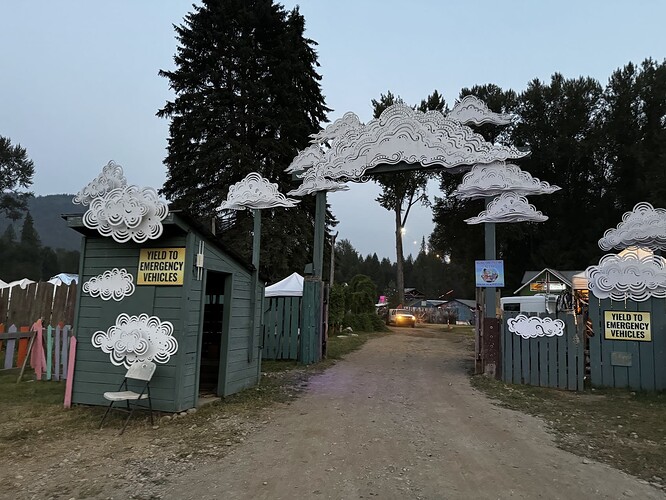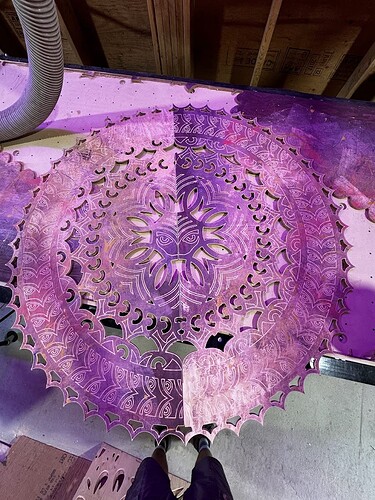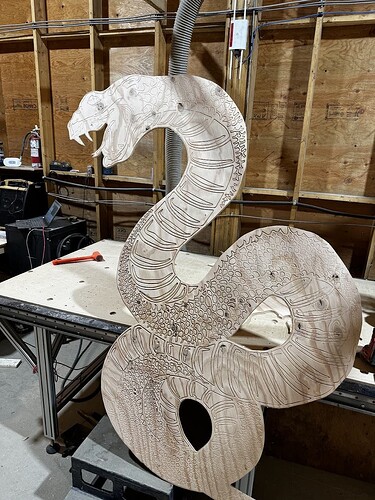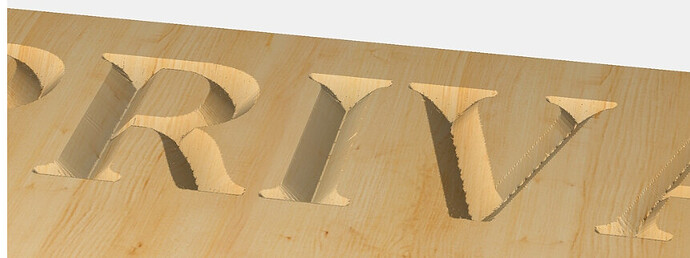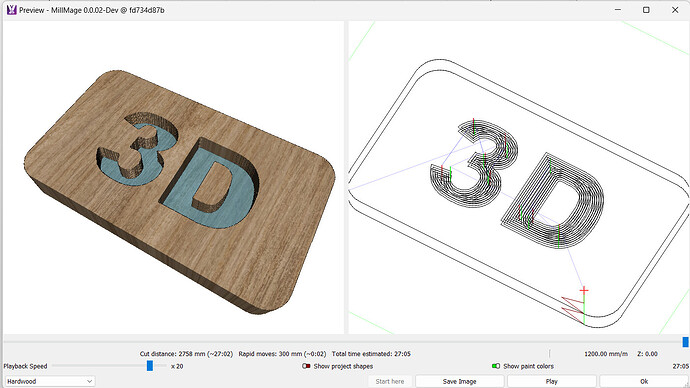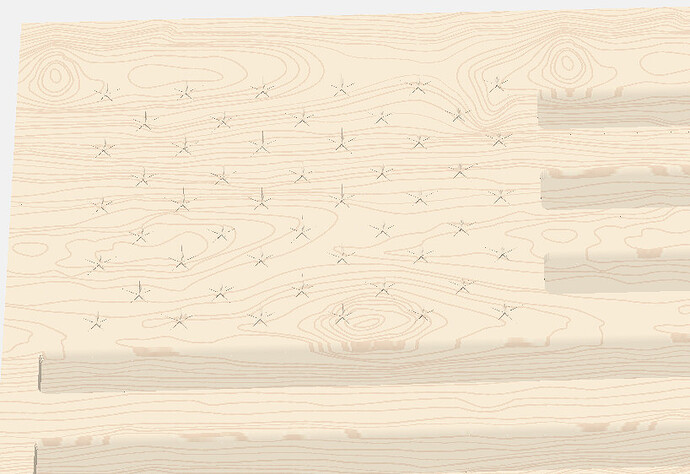If MillMage flows as easy as LighBurn, I don’t care much about the cost. It will be worth every penny. I am so tired of struggling with other ware.
VCarve is solidly on the roadmap, but will (most likely) not be in the initial release of MillMage. It requires a very complex bit of code (to put it lightly). In progress.
2.5D capabilities from a mesh are also on the roadmap, but likely wont make it into initial release. We want to nail the core features and workflow before we start adding the more advanced ones.
You will be able to output .gcode files, and adjust how the code is output, akin to how you can do this already in LightBurn Custom GCode - LightBurn Documentation
I’ll wait for the vcarve. Thats the majority of what I do.
Thanks for the update. It’s good to see that both vcarve and 2.5D mesh are both in the works. Hopefully, they’ll both make it into a release soon. Meanwhile, I’ll keep using the quirky mix of apps I’ve been tinkering with. I hadn’t looked at the GRBL version of Lightburn as my CO2 laser is Ruida based. The output parameter settings look interesting - something to check out when I feel like tinkering.
If MillMage works out to deliver anything close to what you folks have done with Lightburn it will be worth the wait.
I just worked for a month doing the Digifab at Shambhala Music Festival - I did all the work with MillMage. It’s absolutely going to change how you work with routers.
Some of the things made with MillMage this year:
I have had several CNCs over the years from home grown to Shapeoko and X-Carve. All have been shelved or disassembled into other projects because I hated the tool stack. I still have a smaller X-Carve and Millmage will be the main driver for me to pull it out from under the bench and making it a viable tool again.
I have access to the Beta but haven’t been able to carve (pun intended) out the time to play with it properly and get the machine back into a usable state but I’m definitely looking forward to this ride.
So can you give some insight on workflow, as in CAD to tool path and hit start. Similar to Lightburn?
Seeing how it is one program it would seem that changes should be able to update gcode the way Lightburn does it without generating a file and then having to update file to send to router.
Sure - the workflow in very brief :
- Set up your workpiece size. This can be the maximum size of your table, or your material size. In this window you also set up your clearance/retraction height, units, origin, material thickness, and z zero reference surface (top/bottom/etc)
- Once into the design interface, you do your usual cad/cam work - extremely similar to LightBurn. However, you add operations (pocket, profile, drill, rest pocket, etc), assign shapes to the operations and adjust their specific parameters, then those are shown in the Operation Window
- You can then save to GCode (customizable as with the current Custom GCode in LightBurn) or directly control your machine, if supported.
There’s no posting process - your code is built when you press start, save gcode, or preview.
Of course this is a very condensed workflow. There are a lot of capabilities that aren’t covered above - tool libraries, operation specific features, etc. And of course, if your design changes, the toolpaths will all update along with it.
Sounds like quite a timesaver from how I am now doing it.
But will have to wait for vcarve as that’s how I primarily carve.
Isn’t vcarve just milling with a “V” point tool? Other than depth being critical, I fail to see the difference compared to other milling operations.
there are subtle differences since most vcarving is actually a 3d operation to get fine points on lettering and other shapes that requires it. Not trying to be condescending, just not sure if you’ve seen that process when the router/spindle is performing a vcarve.
Not at all. Not actually have I seen a machine run, except in videos. You said 3D, but I believe we are operating in a 2.5D world. X/Y motion and Z steps if I have it right. True 3D can do tapered spirals using X/Y/Z motion.
At the risk of starting an argument, I believe “vcarve” is a term Vectra invented to make their products high cost more acceptable. It is still 2.5d software.as par as I know.
V-Carving is actually very complicated. If you want to use a V-Shaped bit dragged along a profile at a specific depth, that’s trivial (and already supported).
If you want to vary the depth so the tool creates a perfect V-shaped pocket that varies in width with the shape, things are a bit different - It requires computing what’s called the “Medial Axis” of whatever shape you’re carving - that is, the path for which you are the same distance from two (or more) sides of your shape, and which parts of the shape you’re equidistant from for any given segment. When you have the medial axis, you use it to compute the proper depth for a given segment of the V-Carve.
In case anyone is unclear, this is what I’m referring to:
Computing the Medial Axis is something we’ve had one of our “moon-shot” coders on for several months now. It’s a relatively simple thing to explain, but really damn hard to get a computer to do it cleanly and quickly.
A few basics:
- Operations currently supported are Drill, Pocket, Rest Pocket, Profile.
- Pocket and Profile ops can use straight plunge or ramp, and profile adds the ability to do a spiral descent as well.
- Tabs are already supported (full depth, partial depth, ramped)
- Pocket ops can use offset or raster clearing, and will attempt not to do a full retract unless necessary
- You can specify a “Safe Retract” height for moves between operations, and a “Rapid Retract” height for retractions within a single op. You don’t have to use rapid retracts if you don’t want to.
- Preview is shown in orthographic wireframe with different colors for retracts, rapids, plunge, and cut moves, as well as a full 3D sim. Both views are interactive. The 3D view is similar to Vectric’s.
To give you an idea:
I consider myself “schooled” on this. Thanks for the explanation!
Does the implementation support saving multiple versions - for users with multiple, different, machines?
BTW - Nice to see the work you did on the festival pieces!
You will not be disappointed. I have been using since 2012 – v6
I fail to see the process improvement here? I use Vcarve Pro. I design the cut I want, create the tool paths, export the gcode for each tool path with the machine specific post processor set at export stage. I take the gcode and load it on to my router (Shapeoko 4). Are you saying your process is different to this ?
@Colin said this above, no “post processor” involved.
Yes. Or Run each enabled tool operation separately.
No. For now, GRBL is GRBL. Most dual-mode (mill/laser) machines that can run Lightburn are probably GRBL controllers. When you get into the Mori Seiki or Fanuc class of machines is when a post processor becomes necessary. If you really need post-processor capability, EZCAM has packages starting at about $1200.
